Kathmandu
Lying in the magical realm of the Himalayas, Kathmandu is the capital city of Nepal. Being the largest city in the country, the city has no dearth of tourist attractions to fascinate tourists with. People from all around the world visit this tourist destination to find peace and quiet. But, the most important factor that makes Kathmandu a major tourist destination in the region is that it is a part of the kingdom of Himalayas, which ensures a memorable holiday experience.
Kathmandu is a destination where you find peace and comfort which makes it a perfect destination for relaxation. There are resorts in Kathmandu where you can enjoy luxury amenities and all comforts at very affordable tariffs. Waking up to crisp breeze and fiery sunrises, ensuring a day filled with joy and ecstasy; and treating your eyes with magical dusks when the setting sun adds various tones to the sky – such experiences are not uncommon in Kathmandu. The fresh air and the refreshing greenery of the city are exactly what you need to rejuvenate your body and soul.
The city of Kathmandu has held within its ambit uncountable treasures for only explorers to unveil. Whether you wish to cover all the major attractions in the city during your visit or want to tread beyond the beaten path to explore the unexplored, Kathmandu has enough in store for you. Apart from being a place with rich natural biodiversity, Kathmandu also boasts a rich cultural scene with a perfect amalgamation of Buddhist and Hindu cultures. The spectrum of religious places in Kathmandu covers a number of Hindu Temples as well as vibrant Buddhist stupas. The presence of these marvellous structures in Kathmandu makes it a treasure trove of architectural masterpieces. Any architecture buff is sure to have some enjoyable moments in Kathmandu.
Since Kathmandu is located amidst Himalayas, you can be sure of witnessing some visual treats when you are here. Some of the most prominent mountains that add grace to the landscape of Kathmandu are Ganesh Mountain and Langtang Mountain ranges. However, if you move a little further to the nearby places like Nagarkot and Chisapani, you can even get to witness the mightiest of all – Mount Everest and trek to the Everest base camp. That is also the reason why Kathmandu can be found on any photographer’s bucket list, especially in Asia. It is, without a doubt, a scenic place and the landscapes that surround it are perfectly picturesque. Indulging in landscape photography here is definitely going to be a great decision for your Instagram handle.
Kathmandu is also a great choice of destination for adventure junkies as some of the greatest Himalayan treks have their trails lying close to the city. Just visit Kathmandu and embark on a journey of solace and self-discovery in the higher mountains where adrenaline-pumping action awaits you to fill your mind with thrill. However, the list of adventure activities in Kathmandu also covers various other activities like paragliding, boating, camping, and wildlife tours.
The days never get too warm even during summers and the nights do not get too cold even during winters in Kathmandu. The city enjoys an elevation of 4,590 feet, which guarantees a pleasant climate throughout the year, making it an ideal destination for tourism at any given time. However, it is best to visit Kathmandu in October or November because during these months, the skies are clear, the landscapes become verdant and climate is perfect.
Adventure
Trekking
Family Tours
Honeymoon
More Kathmandu Packages
Kathmandu Sightseeing Tour For 4 Days and 3 Nights
6 Days Nepal Tour Package
Nepal Tour Package from Gorakhpur
5 Days Kathmandu Pokhara Tour Package
Kathmandu FAQ's
Travel Advice
Do not carry with you cash more than necessary.
Don’t flash your valuables in public areas.
Don’t leave your valuables in the hotel room.
Never take a room in a secluded place, stay, resort or hotel.
Always enquire about a room safe and keep all your valuables and jewelry there.
If you are up for a trek, carry all your essentials along.
Do carry a first aid box.
Never roam round after midnight.
Nepal is comparatively cooler than the surrounding areas so carry with you sufficient woolen layers.
Photograph in the religious places or temples only after taking permissions from the heads there.
Learn few words of Nepali.
Always greet the locals with a smile.
Carry with you a copy of your license or an ID proof.
Be wary of the touts.
If you eat at the street vendors, double check the quality.
Never let anyone mislead you.
Ensure that you dress appropriately.
Nudity is prohibited in Nepal.
Filming and videography cannot be done without permissions.
Do not indulge in drugs of any form. If you see someone taking drugs either call the cops or get away from the situation.
Drinking Laws
Our Recommendations: What you can’t afford to miss?
Boudhanath stupa
Boudhanath stupa is one of the most recognizable and holiest sites of Kathmandu. Assigned the status of UNESCO heritage in the year 1979, the Boudhanath Stupa has a vast diameter of 120 meters. This makes it the largest temple in Nepal. Built on the octagonal base, the stupa has multi hued prayer flags that veil it from its 36 meter central spire and is enveloped by the prayer wheels. Rich in symbolism, Boudhanath has 5 statues of Buddha which represent the 5 elements – ether, earth, fire, water and air, 13 rings from the base to the top which represent the steps to Nirvana and the 9 levels which represent the Mount Meru. This is indeed a must see place in Nepal.
Everest Region
Everest – 1500 mile long Himalayan range comprises of each one of the world’s 14 peaks that are spread over 8000 meters. Nepal houses eight of these 8000 meter spread 14 peaks. These include:
Dhaulagiri I (8,167 m)
Everest (8848 m)
Lhotse (8516 metres)
Annapurna I (8109 m)
Kanchenjunga (8586 m)
Manaslu (8163 m)
Makalu (8485 m)
Cho Oyu (8,201 m)
The rest of the peaks are found in China, India and Pakistan.
Annapurna Region
The Annapurna Region can be reached via the serene Pokhara. It is predominantly known for its Fish Tail mountain and Annapurna range. The 10 day Annapurna Sanctuary trek is definitely one of the most important things to do in Kathmandu. Alternative trek is the Annapurna Circuit trek that takes about 12-19 days and most thrilling Annapurna Base Camp trek that takes about 15-16 days.
Bhaktapur
Bhaktapur is a tiny town that lies about 10 km from Kathmandu. It is largely known for its vast collection of temples. Most impressive temple here is the 5 storey, Nyatapola Temple which is the tallest temple of Nepal. The town has its own Durbar Square. Northern end of the Durbar Square is home to the Royal Palace that allows the visitors to access the Golden Gate. It is very intricately carved and and set in a bright red gate house. National Art Gallery here has an extensive variety of Tantric cloth paintings. No cars are allowed here and as a result it is a very quiet place. Day tour to Bhaktapur is one important thing to do here.
Chitwan National Park
Chitwan National Park is a vast national park spread over an area of 932 km. It was established in the year 1973 and in the year 1984, it acquired the status of world heritage. The park houses within it 450 species of birds – parakeets, kingfishers, drongos and orioles, and a myriad of animals like elephants, sloth bears, wild boars, one-horned rhinos, gharial crocodiles, monkeys, deer and hyenas. More exotic species of animals like sloth bears, leopards, majestic royal Bengal tigers and wild elephants are also found here. According to the counting done in 2011, there 125 adult tigers and 501 rhinos living here. When in Kathmandu, you must spend 2 days in the park to best explore the wildlife here.
What will like you like there?
Kathmandu city has a whopping seven world heritage sites located in the Kathmandu Valley. There is no surprise, why Kathmandu ranks high in best tourist places of the world. Once you are done exploring the myriad of temples, stupas and squares, you’ll know why visitors who come to Nepal begin planning for a recurrent visit even before they are done with the current one.
The 7 must see UNESCO sites include:
The Buddhist stupas of:
Bauddhanath
Swayambhu
Durbar Squares of
Patan
Hanuman Dhoka
Bhaktapur
Hindu temples of
Changu Narayan
Pashupati
These are the seven most important places to see in Kathmandu.
Bangkok has the tuk tuk, Manila has the Jeepney and guess know Kathmandu has? Kathmandu has the bemo! If you wish to explore a unique public transport of Kathmandu, hop into Bemo right away. It is a great public transport for everyone who wishes to travel in budget without negatively hampering the carbon footprint.
It shouldn’t take you more than a meal to figure out why the Nepali food is so mouth watering. Restaurants are found in abundance in the Kathmandu city. One food item that you must try before leaving Nepal is the Momos or otherwise known as the Nepalese Dumplings. A delicious blend of vegetables and meat momo sure make a great food item post a hectic day at trekking. Steamed, Fried, Chicken or Paneer, whichever you order, it would hard to resist after one. Tandoori Chicken Momos is also a fine choice. Not to forget all these are available at dirt cheap prices.
Do you enjoy shopping for textiles? If yes, Kathmandu should be top on your bucket list. You can spot the Pashmina, wool and the cashmere scarfs everywhere across the Thamel tourist district of Kathmandu. Don’t mind bargaining to get these at the best prices possible. It’s not just the scarfs that you can put your hands on but there is a massive collection of outdoor sporting gear and winter jackets that you’ll enjoy buying.
There is simply no paucity of locals in and around the Durbar city of Kathmandu. True Nepal is majorly known for its Mount Everest and the top notch trekking excursions but don’t let that forget you about the warm, humble and welcoming locals who live here in the mountains. Just few days of your stay in Kathmandu, and you’ll know the true meaning of Namaste. Locals of Kathmandu always approach the tourists with a smile. They appreciate and very well value the tourist dollars.
When is the best time to visit Kathmandu?
Kathmandu is, in general, a cold place. The summers are warm, and the winters can be a little too cold. However, the best thing about this city is that it has a particular period of time that offers you everything you need in your holiday.
Spring
Spring brings beauty to Kathmandu. From September to November is the time when you should plan your trip to this city. One of the biggest advantages of it is the Dashami or the Dussehra Festival. Kathmandu celebrates with music and color and light. You will experience the taste of their true culture during the festive season. These months see the best weather in the city. The signs of arriving winter turn the sky blue and the clear weather opens up the scenic beauty in front of you.
Summer
Kathmandu’s summer offers a pleasant weather. The temperature never rises above mid 20 degree Celsius and the nights are generally cooler.
Monsoon
The rainy season is not the perfect time to visit the city. Heavy rain can sometimes cause landslides, which is inconvenient for traveling.
Winter
Kathmandu’s winter has warm days and very cold nights. It can drop down to 4 degree Celsius during midnight.
How to reach Kathmandu?
Being the capital city of Nepal, Kathmandu is well connected to the rest of the world by air and road. The city has well maintained streets for safe travel.
Air
Nepal has its own airline; hence, it offers direct flights to and from Delhi, Bangkok, Dubai, Hong Kong, Doha, and Kuala Lumpur. You can take a bus or a hired car from the airport to the city. There are other airlines operating in Nepal too, which make it easy for you to get a ticket.
Bus
There is a direct bus service from Delhi to Kathmandu. The service was launched recently. One thing to remember is that it takes a long time to reach the city from Delhi by bus. You must carry drinking water and food with you during the journey. There are also buses from Varanasi to Sunauli, the border of Nepal. From there, you can take a local bus to Kathmandu.
What are the different things/activities to do in Kathmandu?
The best way to experience the city of Kathmandu is by experiencing all that its culture has to offer. There are plenty of great ways to enjoy yourself in there. Some of them are:
Trekking
Kathmandu offers a variety of choices when it comes to trekking. Some of its best trekking destinations are places of religion and historical value. You must also consider traveling the city on foot. There are a lot of narrow roads that lead to temples and fine old restaurants.
Shopping
Like most of the mountain cities, Kathmandu has small market areas that are a bargainer paradise. The markets offer colorful and stylish clothing and junk jewelry. The prices can be cheap if you know how to negotiate. Shop till you drop.
Spa
Spas and meditation centers have become very popular in Kathmandu. If you want to feel relaxed after a heavy day’s travel then walk into a traditional spa and let them spoil you with massages.
Which are the best resorts to stay in Kathmandu?
Kathmandu is one of India’s most prominent tourist destinations. Tourism is one of the city's biggest sources of income. Therefore, you can find good quality accommodations in Kathmandu. Some of the best resorts in and around the city are:
- Chhahari- Retreat
- Chhaimale Resort
- Chandra Ban Eco-Resort
- Shivapuri Heights Cottage
- Pataleban Vineyard Resort
- Dhilikhel Village Resort
- Grand Norling Hotel's Resort
- Haatiban Resort
- Park Villae Hotel and Resort
- Gokarna Forest Resort
- Himalayan Horizon
- The Dwarika's Resort
- Temple Tree Resort and Spa
What are the best public transport modes to commute around Kathmandu?
Kathmandu has plenty of transportation options for the tourists. Depending on your need and budget, you can select accordingly.
Car
You can hire a car from a lot of places in Kathmandu. You can ask your hotel manager to find you one and save yourself the time. It’s easiest to travel around in the city in a car.
Bus
From Ratna Park Bus Stand you can take a minibus or a bus that leaves for different parts of Ratna Park. They are frequently available.
Taxi
Metered taxis are easily available in Ratna Park. This is a cheaper option than a hired car.
Which are the best places for shopping in Kathmandu?
- Rajdhani Handicrafts
- New Neem Rana Gift House- jewelry and gems
- Torqutse Art & Gallery
- Imagine - The Fashion Boutique
- Shopping Malls- CTC Mall, Rising Mall, Civil Mall, Times Square Mall
What are the famous trekking destinations in Kathmandu?
Kathmandu, with its valleys and mountain paths, is an ideal place for trekking. There are both short and long distance hikes that can be completed in a few hours or can take up to a day. keep your maps and water bottles close. Here is a list of the best trekking destinations:
- Adventure Mission Trail
- Champadevi
- Phulchoki
- Kakani to Bhanjayang
- Namobuddha
- Shivapuri from Budhanilkantha
What all adventure activities can one enjoy in Kathmandu?
If you are adventure loving then Kathmandu is a perfect destination for you. Pick any of these activities and experience thrill like never before:
- Golfing- some resorts have their own golfing facilities.
- Bird Watching- include this activity in your trekking day. There is a great variety of beautiful birds in Kathmandu.
- Rock Climbing- the rock climbing sites in Kathmandu are very popular.
- Mountain Biking- hire a bike for a day and storm the mountains. It’s advised that you do it only if you have previous experience.
- Helicopter Sightseeing Tour- another popular activity in the city.
Which are the famous historic monuments to visit in Kathmandu?
Kathmandu is a place with a beautiful cultural past. There are tourist destination that will take you to the rich past of Kathmandu. You should consider visiting these historical places for a visit:
- Kathmandu Durbar Square
- Boudhanath Stupa
- Swayambhunath Temple
- Garden Of Dreams
- Pashupatinath Temple
- Kopan Monastery
- Thamel
Which are the best monasteries to visit in Kathmandu?
When you are in Kathmandu, reserve one day to visit the Buddhist Monasteries in and around the city. Here are three main ones that you mustn’t miss:
- Rigon Tashi Gompa
- Kopan Monastery
- Naiki Gompa
How is the nightlife like in Kathmandu?
Kathmandu has a very active and popular nightlife. From dancing and late night meals to visiting pubs, the city has everything that you can think of. Another very attractive nightlife activity in Kathmandu is visiting the popular casinos. These are always filled with tourists from around the world. If you are one of those people who like it peaceful then the late night cafes and movie theaters will serve you right. The city stays awake all night.
What's the Everest Base Camp Trek difficulty?
How difficult is Everest Base Camp Trek for beginners?
As a beginner, the idea of hiking up to the mighty heights of Everest Base Camp may seem a bit daunting to you. But if you are determined to hike up to the base of the highest peak in the world and get a clear sight of the majestic Mount Everest, then you surely can fulfill this dream.
The difficulty level of this trek ranges from moderate to challenging. It depends on a lot of factors. The obvious ones are the temperature and altitude. You have to be aware of the fact that the acclimatization process before starting the trek as well as getting used to new altitudes during the trek is a must. Generally, there are a few days in between, set specially for acclimatization and are equally important for walking upwards.
Altitude sickness can affect even the fittest amongst the lot. So keep a lookout for symptoms like dizziness, lack of appetite, headache and breathlessness. As the trek starts, you will be walking through rocky terrains and ice packed trails with a lot of uphills and downhills. You will also encounter unpredictable weather conditions like heavy rains, hail, snowfall and even snowstorm, so plan and pack waterproof items of clothing which get dried up easily.
Although you don’t have to be a skilled hiker or mountaineer, you need to have a good amount of endurance as well as vigour to successfully complete this trek because you will be covering 15 Km per day, that is six to eight hours of trekking on average.
So we firmly recommend starting to build up your stamina by doing regular physical exercises like cycling, jogging, hiking and a lot of walking. Start a few weeks before you travel to Nepal so that during the trek you have enough tolerance level and don’t have much fatigue.
What difficulties one can face during the trek?
The difficulties along the breathtaking Everest Base Camp trek can be varied for every trekker. They depend on a lot of factors as well. These include firstly your preparation for it, the weather conditions, how well do you adjust to the altitude, how long you take to cover a particular distance, how steep are the trails, so on and so forth. The first thing to remember is that because of limited tourist infrastructure, there will be little or no phone signal, no WiFi and even zero power supply along your trek.
Every trek usually starts from Lukla which is at an altitude of 2800 meters. This point is in itself quite a high start for your trek. From here, as you ascend uphill, you may struggle with altitude sickness, medically known as Acute Mountain Sickness (AMS). Do not take this fatal condition lightly. Keep in mind that you cannot prepare for the altitude sickness beforehand and it can happen to anybody.
Yes, you should definitely carry medicines like Diamox for prevention but remember that if people are severely faced with this difficulty, they have to be choppered out to a lower altitude. There can also be minute problems due to the high altitude like fever, flu, low levels of oxygen intake, blisters, and frostbite. At such a high altitude, you can expect heavy snowfall which is another difficulty you will have to withstand during the Everest Base Camp trek.
As you go higher to the Khumbu region, you may start coughing and it can increase violently. This is due to the irritation from the cold dry air. To prevent this, any one out of the mask, buffer, scarf or a handkerchief will be useful to breathe in the humidified air.
Other than this, if you are going for the Everest Base Camp trek during a peak period (September to November and February to May) you will come across big crowds and it may be difficult and time consuming for you to proceed on your trail. Rocks falling off from mountains is another hazard of which you have to be careful. Similarly, the glacial areas also have the risk of icefalls which are quite dangerous.
What makes it difficult?
Sneaky weather, fatal altitude sickness, dangerous rockfalls and icefalls, hiking up and trekking down the jagged pinnacles on foot, and several such elements make the Everest Base Camp difficult to conquer. Even before you start your journey on foot to the Everest base, the flights from Kathmandu to Lukla may get canceled due to harsh weather conditions.
You may even have to wait it out for a few days. And mind you, Lukla comes in the list of top ten most dangerous airports in the world! After descending back to the starting point as well, there is no guarantee that the weather will be suitable for flights to take off. You may have to resort to the expensive helicopter ride to go back to Kathmandu.
Even after you reach the starting point (Lukla) for your trek on time, beginning your trek from a staggering 2800 meter high altitude turns out to be difficult for some people. The expedition in sub-zero temperatures is also one of the main reasons which makes this trek difficult. Along with it, a lot of people level up this challenging trek by carrying their own luggage instead of making the porters carry them.
As you trek upwards, the air becomes thinner and thinner and the level of oxygen reduces making it difficult to properly breathe. So it is of utmost importance that you get used to the altitude steadily or else trekking up too high too fast will be fatal for you. Basic commodities like water and food also become expensive and limited as you trek higher and higher.
As the Everest Base Camp trek is becoming more and more popular, there are a lot of tour operators taking a large number of people to this trek. This has made the trail a lot more crowded and as a result, it may become difficult as well as time-consuming to ascend to and descend from the Everest Base Camp.
Newly Added Kathmandu Experiences
Kathmandu Reviews

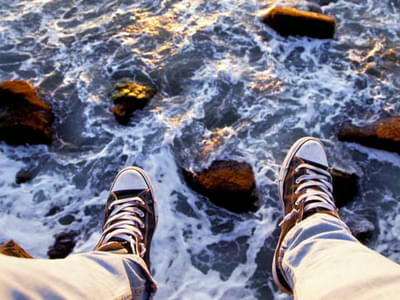
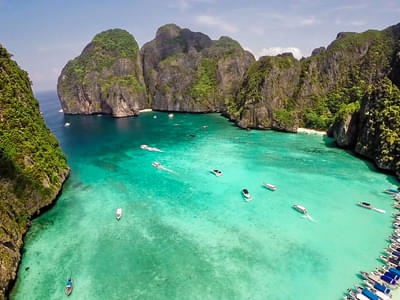
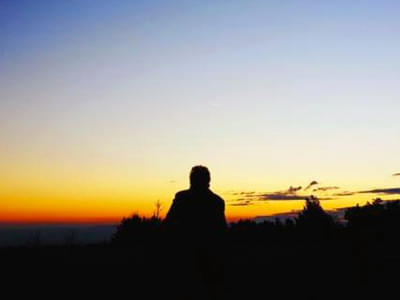
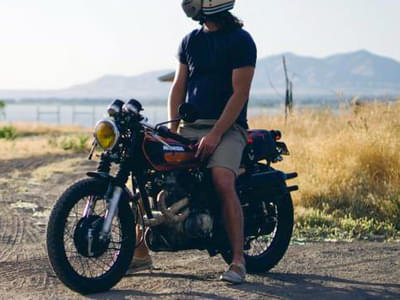


.jpg?w=340&dpr=2)
.jpg?w=340&dpr=2)
.jpg?w=340&dpr=2)
.jpg?w=340&dpr=2)
.jpg?w=140)









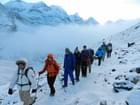




.jpg?w=140)
.jpg?w=340&dpr=2)



.jpg?w=140)
























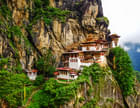



.JPG?w=340&dpr=2)
.JPG?w=140)










































.jpg?w=1280&dpr=1)







